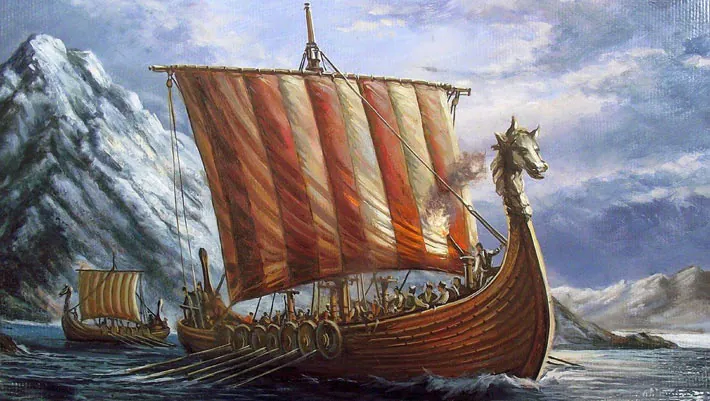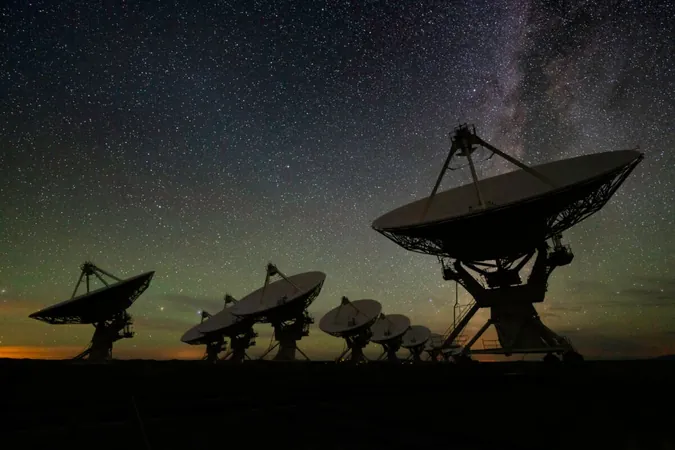
Unveiling the Complex Tapestry of Viking Genealogy: Faroe Islands vs. Iceland
2024-11-25
Author: Wei
Recent research has unveiled a startling revelation about the Viking expansion into the North Atlantic: it was far more intricate than historians and geneticists previously understood. Traditionally, it was believed that the Vikings brought a homogeneous genetic legacy to the regions they settled, including the Faroe Islands and Iceland. However, new evidence indicates that these populations descended from distinctly different ancestral lineages.
According to a new genetic study conducted by Dr. Christopher Tillquist and his team from the University of Louisville, the Icelandic and Faroese populations have separate genetic signatures that reflect their diverse founding groups. Specifically, the Faroes were likely settled by a multifaceted array of males originating from various Scandinavian populations, contrasting sharply with the more uniform genetic background of Iceland's early inhabitants.
The Viking Age, spanning from the 8th century until approximately 1050 CE, saw Norse explorers navigate vast distances across the Atlantic in their iconic longships, reaching as far as Newfoundland, Greenland, and even parts of the Mediterranean. The Faroe Islands, comprising 18 islands in the North Atlantic, were once thought to have been settled solely by early Viking colonizers. However, archaeological findings suggest earlier inhabitants, possibly Celtic monks from the British Isles, existed on these islands as early as 300 CE.
The historic accounts, including the Færeyinga Saga, narrate the settlement of the Faroe Islands by a Viking chief named Grímur Kamban during the late 9th century. Yet, the origins of Grímur’s contingent raised questions. Dr. Tillquist and his colleagues utilized advanced genetic techniques to analyze Y-chromosome markers from 139 men across the islands of Borðoy, Streymoy, and Suðuroy. Their findings showed a significant genetic diversity among the Faroese settlers compared to Icelandic ones, indicating that while both groups were Norse, their ancestral backgrounds were far from identical.
The researchers also developed an innovative genetic method they termed 'Mutational Distance from Modal Haplotype,' which allowed for more precise analysis of genetic variation. This method played a pivotal role in revealing the founder effect—where a limited number of ancestors contributed to the genetic landscape—still observable in the contemporary genetic makeup of both populations.
Dr. Tillquist stated, “For years, it was assumed that both the Faroe Islands and Iceland were colonized by similar Norse populations. Our study challenges that long-standing belief and highlights the unique genetic heritages of these regions.” He elucidated that the genetic divergence persisted without significant gene flow between the two populations, suggesting that the Vikings did not interbreed despite their geographic nearness.
This groundbreaking research not only shifts the narrative surrounding Viking expansion but also encourages us to reconsider the complexity of human migration patterns during the Viking Age. Each longship that ventured into the Atlantic carried not merely warriors and settlers but also a rich mosaic of genetic heritage.
The results of this study, published in the journal Frontiers in Genetics, underscore the need for a more nuanced understanding of Viking history, revealing a multifaceted story of conquest, settlement, and cultural exchange across the North Atlantic that has deep and lasting implications for our understanding of human history.
Get ready to rethink everything you thought you knew about Viking origins—this isn't just history; it's a genetic saga unfolding before our eyes!



 Brasil (PT)
Brasil (PT)
 Canada (EN)
Canada (EN)
 Chile (ES)
Chile (ES)
 España (ES)
España (ES)
 France (FR)
France (FR)
 Hong Kong (EN)
Hong Kong (EN)
 Italia (IT)
Italia (IT)
 日本 (JA)
日本 (JA)
 Magyarország (HU)
Magyarország (HU)
 Norge (NO)
Norge (NO)
 Polska (PL)
Polska (PL)
 Schweiz (DE)
Schweiz (DE)
 Singapore (EN)
Singapore (EN)
 Sverige (SV)
Sverige (SV)
 Suomi (FI)
Suomi (FI)
 Türkiye (TR)
Türkiye (TR)